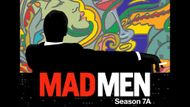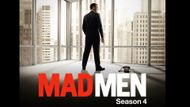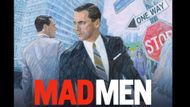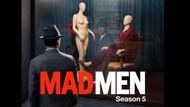Mad Men opens the final chapter with Don Draper at a California meditation retreat, and the closing image still divides viewers in 2025. The series cuts from Don’s calm smile during a group exercise to the real-life Coca-Cola "Hilltop" commercial, a move that interrogates whether he has changed or simply returned to his talent for advertising.
The scene is short and quiet, but it holds a lot of meaning about identity, work, and how private experiences have the potential to become public ideas. This article explains that final "Person to Person" moment in plain language.
It looks at what happens at the retreat, why the jump to the Coke ad matters, and how other characters receive quieter endings. The goal is to make the choices in the last episode clear and to explain why the ending still sparks conversation.
Don finds a moment of possible change at a California retreat

Don goes to the retreat to step away from his life in New York and to listen. At one session, he hears another guest describe feeling unseen and forgotten, and Don's reaction is unusually raw. That emotional break leads him into a group meditation where he appears peaceful and smiles.
The final shot holds on that smile before cutting to the Hilltop commercial, so viewers must decide whether this was true change or simply a moment of calm. The retreat scenes show Don listening, not pitching, which feels important to Mad Men’s idea about work and self. Even if he returns to advertising, that pause changes how viewers analyse his choices.
The soda connects personal insight to a public idea

The cut to the Coca-Cola ad is the finale's boldest move. In Mad Men, the imagery and tone of the commercial mirror the retreat; Similar clothes, people gathered together, and a simple act shared by many.
Some viewers read this as proof that Don turned his new feeling into an earnest message. Others see it as evidence that he used the experience to make a powerful piece of advertising without deeper personal reform.
Fans and critics talk about the cut because Mad Men used advertising history to comment on cultural change. The episode connects a private moment to how messages reach millions.
How does the finale treat other characters gently?

While Don’s ending draws the most attention, the episode gives short, clear paths to others. Peggy stays and builds her career, Joan starts a business, and Roger finds stability.
Betty’s illness and Sally’s growth add weight, reminding viewers that the show often depicted success and loss side by side. That balance is a key reason Mad Men did not end with a neat moral. The finale lets each person find a small, believable next step instead of a big, dramatic twist.
Why does Mad Men's ending still matter today?

The last scene asks a simple question about change: Can inner shift become real life, or do they become stories sold to the public? For many, the answer has remained somewhat mixed.
The choice to end on a private smile and a public ad keeps the finale alive in discussion decades later. The show remains studied in classes about television. Its ending is taught as an example of storytelling that trusts the audience to decide.
That careful ambiguity is why the final "Person to Person" episode is still being watched, argued about, and taught. Mad Men gives clues but offers no clear answer, and discussions continue.
Even now, people recall Mad Men when they talk about smart endings. Mad Men keeps its power because it treats characters like real people. That choice makes the final scene work for many viewers.
